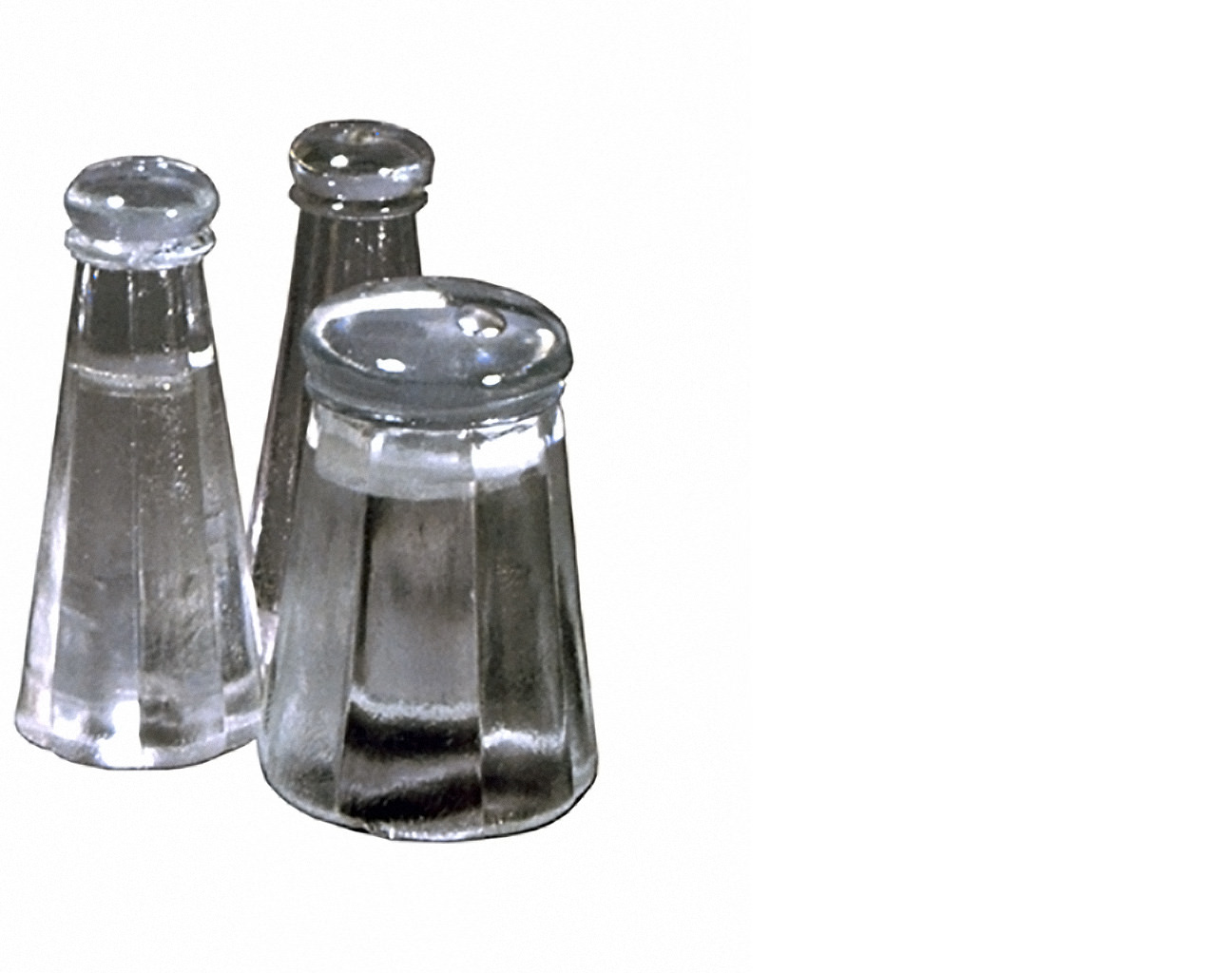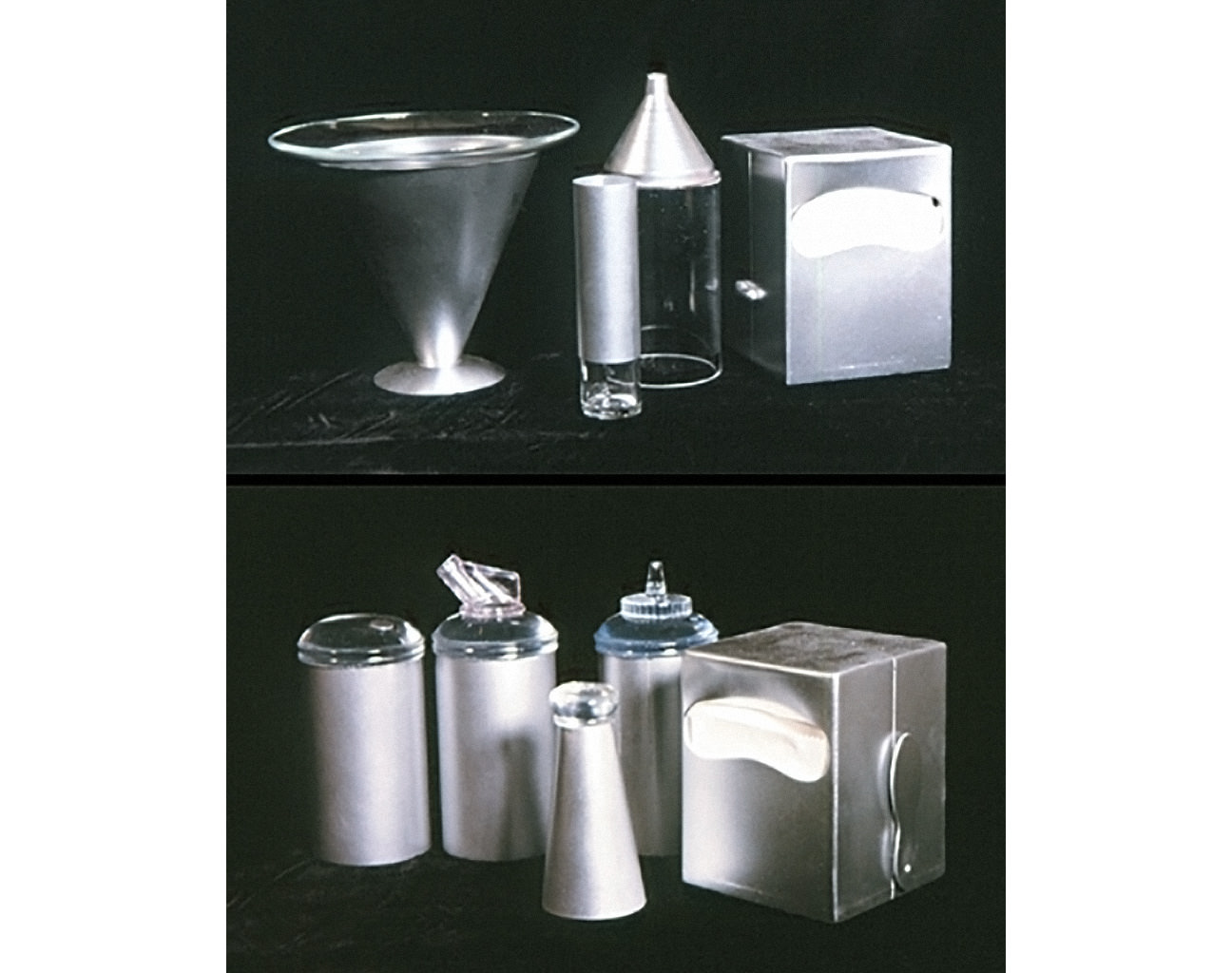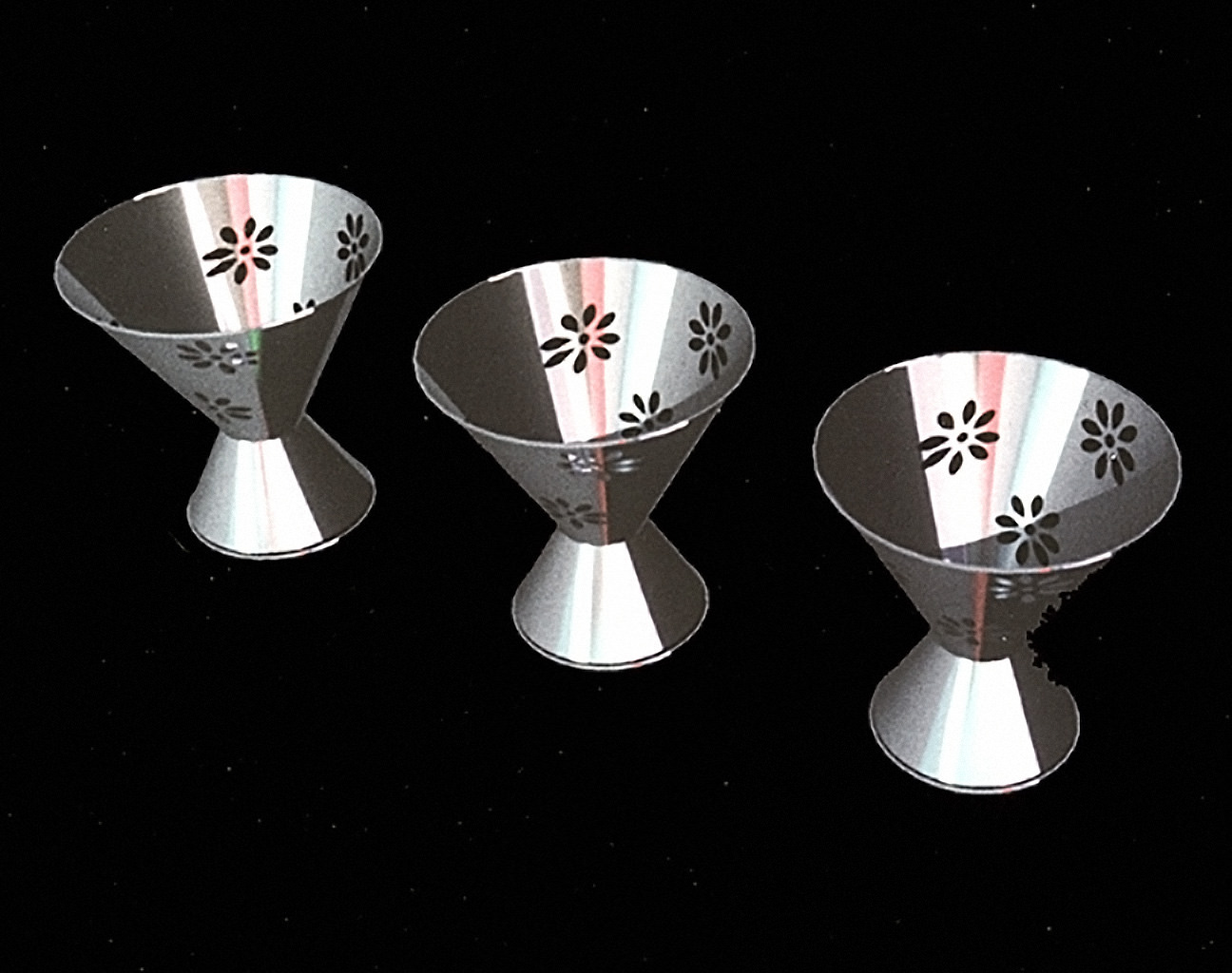
TIN MAN CANISTERS FOR ALESSI
We have always considered a coffee can a beautiful design object. The corrugated body of a standard tin can simultaneously provides structural strength, a decorative pattern, and a tactile gripping surface. It takes a very small design intervention to turn a humble can into a glittering kitchen canister.
After three years and several meetings with Alberto Alessi, we managed to get him sufficiently excited in the idea. The final product was edited by the company to appear more sleek, and perhaps, more commercially viable.

Successful introduction of the canisters generated good response at Alessi. In 1993 we were asked to continue the work in the direction of “anonymous” design. The new collection comprised a group of items one would find at the table of any roadside diner. While the objects retained an air of familiarity, there was always a twist, either in substitution of materials, or in changed proportions or scale.
Our proposals were greeted by Alessi with great enthusiasm, and the work on prototypes started immediately. After months of work, the project was suddenly dropped, without any explanations given.


Proposal for Dixie Cup in stainless steel

Proposal for porcelain tabletop figurines